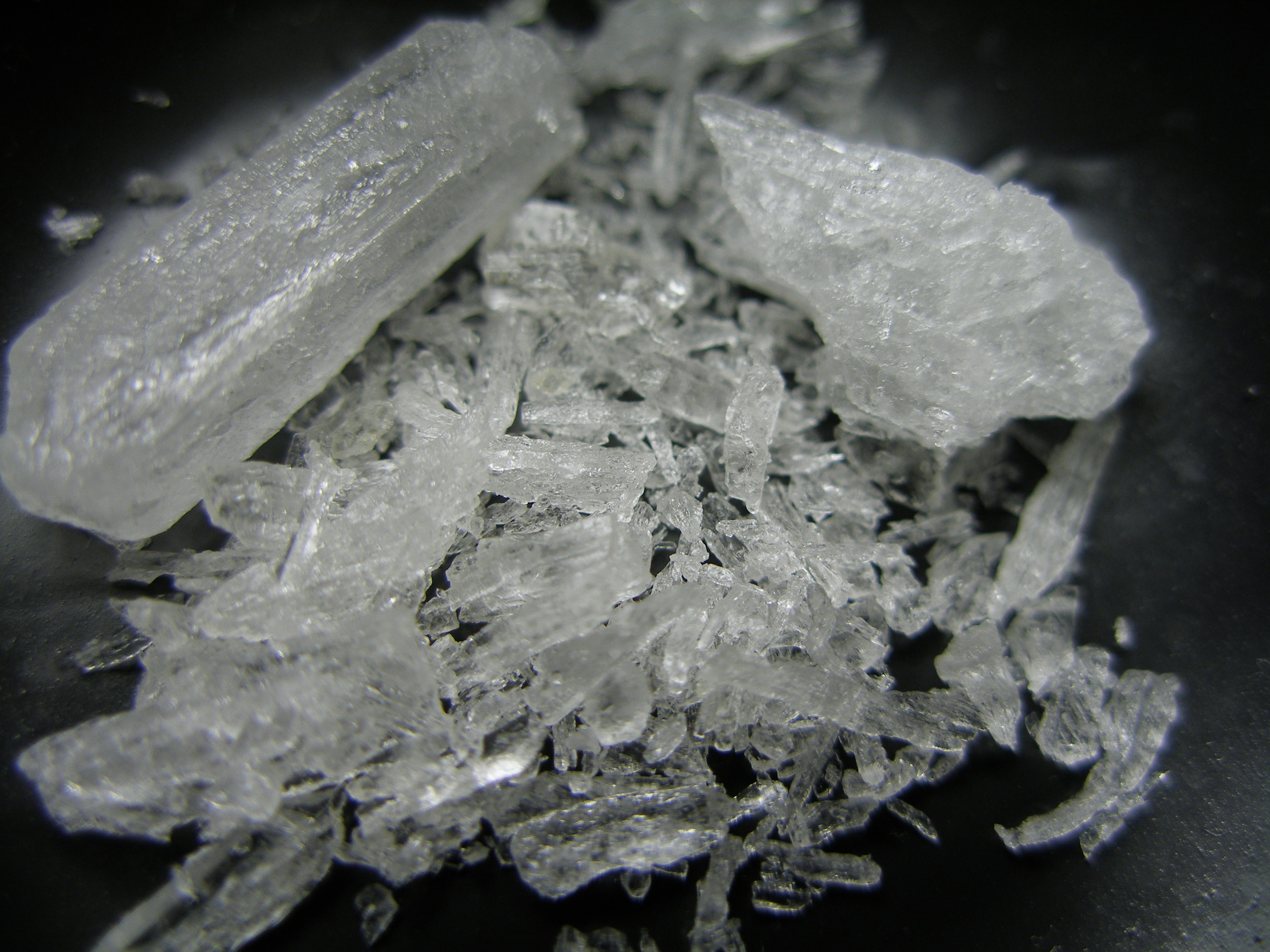Methamphetamine: Difference between revisions
m |
m |
||
| Line 55: | Line 55: | ||
=Goodbye moonmen= | =Goodbye moonmen= | ||
=Goodbye moonmen= | |||
== | =Goodbye moonmen= | ||
=Goodbye moonmen= | |||
== | |||
== | |||
Revision as of 15:58, 9 October 2018

Methamphetamine is a strong physical and mental stimulant. It is legally prescribed as a treatment for ADD under the brand name Desoxyn, for both children and adults. Recreationally, methamphetamine is used to increase sexual drive, lift the mood, and increase energy, allowing some users to engage in sexual activity continuously for several days straight. Methamphetamine production is a relatively simple process, especially when compared to many other recreational drugs which has contributed to its widespread use. It is frequently reported on in the media when home meth-producing labs are busted.
Methamphetamine exists as two enantiomers, dextrorotary and levorotary. Dextromethamphetamine is a stronger central nervous system(CNS) stimulant than levomethamphetamine; however, both are addictive and produce the same toxicity symptoms at high doses. Methamphetamine may be sold illegally, either as pure dextromethamphetamine or in an equal parts mixture of the right and left handed molecules (i.e., 50% levomethamphetamine and 50% dextromethamphetamine). Both dextromethamphetamine and racemic methamphetamine are schedule II controlled substances in the United States. Similarly, the production, distribution, sale, and possession of methamphetamine is restricted or illegal in many other countries due to its placement in schedule II of the United Nations Convention on Psychotropic Substancestreaty. In contrast, levomethamphetamine is an over-the-counter drug in the United States.
History
Amphetamine, discovered before methamphetamine, was first synthesized in 1887 in Germany by Romanian chemist Lazăr Edeleanu who named it phenylisopropylamine. Shortly after, methamphetamine was synthesized from ephedrine in 1893 by Japanesechemist Nagai Nagayoshi. Three decades later, in 1919, methamphetamine hydrochloride was synthesized by pharmacologist Akira Ogata via reduction of ephedrine using red phosphorus and iodine. During World War II, methamphetamine was used extensively by the Axis forces for its stimulant effects. Obetrol, patented by Obetrol Pharmaceuticals in the 1950s and indicated for treatment of obesity, was one of the first brands of pharmaceutical methamphetamine products. Due to the psychological and stimulant effects of methamphetamine, Obetrol became a popular diet pill in America in the 1950s and 1960s. Eventually, as the addictive properties of the drug became known, governments began to strictly regulate the production and distribution of methamphetamine. For example, during the early 1970s in the United States, methamphetamine became a schedule II controlled substance under the Controlled Substances Act. Currently, methamphetamine is sold under the trade name Desoxyn, trademarked by the Danish pharmaceutical company Lundbeck. As of January 2013, the Desoxyn trademark had been sold to Italian pharmaceutical company Recordati.
Dosage
{{#tdose: methamphetamine }}
Duration
These durations are for users of somewhat moderate tolerance. Amphetamine naive users may not be able to sleep for 18+ hours after oral use and other routes will be lengthened as well.
| Onset | 20-70 minutes |
| Total | 8-10 hours |
| Onset | 5-10 minutes |
| Total | 2-4 hours |
| Onset | 0-2 minutes |
| Total | 1-4 hours |
| Onset | 0-2 minutes |
| Total | 4-8 hours |